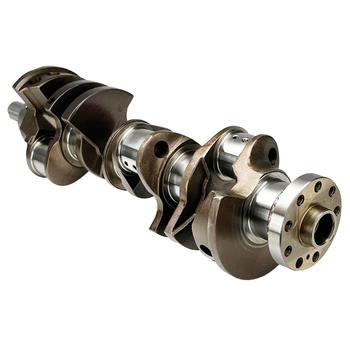Understanding the Toyota 2GR 3.5L Engine Crankshaft
The Toyota 2GR engine is a popular choice for many vehicles, thanks to its impressive performance and reliability. However, like any mechanical component, the crankshaft (part number 13401-31040/31041) can sometimes fail. In this article, we'll discuss common symptoms, causes, and solutions for crankshaft issues in the 2GR 3.5L engine. By understanding these factors, you can make informed decisions about repairs and get your Toyota back on the road.
Symptoms of a Faulty Crankshaft
To diagnose a crankshaft problem, it's essential to be aware of the typical warning signs. Here are some symptoms to look out for:
Common Causes of Crankshaft Failure
Now that you know the symptoms, let's discuss some common causes of crankshaft failure in the Toyota 2GR 3.5L engine:
Insufficient Lubrication
Lack of proper lubrication is one of the most common causes of crankshaft failure. Over time, engine oil breaks down and loses its ability to protect moving parts. Regular oil changes and using the correct oil type are crucial for maintaining crankshaft health.
Overloading or Over-Reving the Engine
Excessive stress on the engine, such as towing heavy loads or pushing the RPMs too high, can lead to crankshaft damage. Always follow your vehicle's recommended towing capacity and avoid over-revving the engine.
Wear and Tear
As with any mechanical component, the crankshaft will eventually wear out due to normal use. Regular maintenance and inspections can help prolong its lifespan and prevent catastrophic failure.
Solutions for Crankshaft 13401-31040/31041 Issues
If you suspect a problem with your Toyota 2GR 3.5L engine's crankshaft, consider the following solutions:
Inspection and Diagnosis
First and foremost, have a professional mechanic inspect your vehicle to confirm the issue and rule out other potential causes. They can use specialized tools to diagnose crankshaft problems accurately.
Repair or Replacement
Depending on the extent of the damage, your mechanic may recommend repairing or replacing the crankshaft. In some cases, a simple repair might be all that's needed. However, if the damage is severe or the crankshaft has worn beyond its service limit, a replacement will be necessary.
Preventive Maintenance
To prevent future crankshaft issues, follow your vehicle's recommended maintenance schedule and pay close attention to engine oil changes. Additionally, avoid overloading the engine and be mindful of its RPM limits.
Conclusion
Crankshaft problems in the Toyota 2GR 3.5L engine can be frustrating, but with proper diagnosis and repair, you can get your vehicle back on the road. By understanding the common symptoms, causes, and solutions for crankshaft issues, you'll be better equipped to make informed decisions about repairs and keep your Toyota running smoothly.




